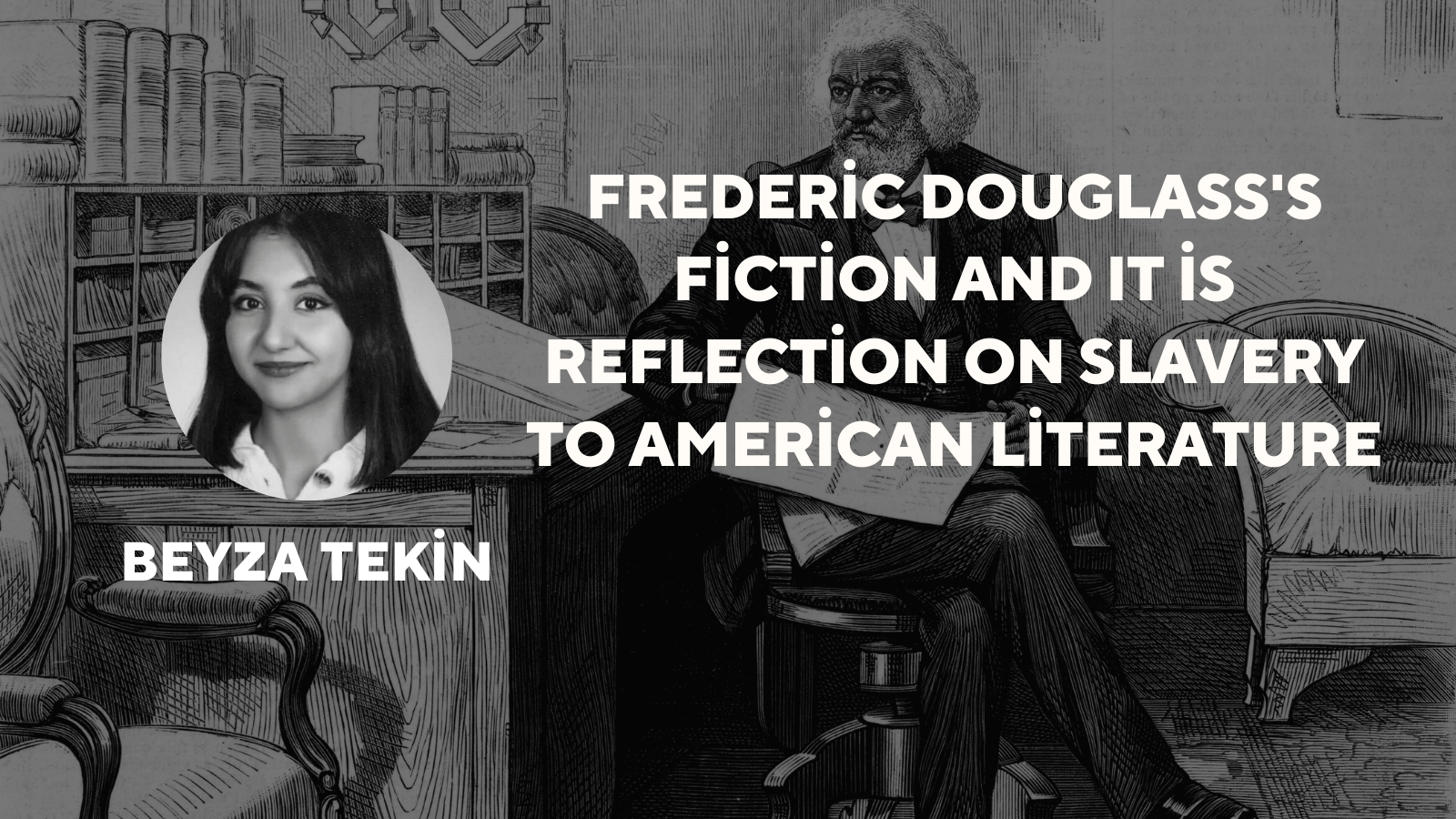In the nineteenth century, the United States underwent a dramatic transition. Changes in the economy, politics, demographics, and geography profoundly impacted how Americans saw themselves, their communities, and the rapidly expanding nation. The legal institution of human slavery involved enslaved Africans and African Americans, which was expected in America from the beginning; only white males owned land and had access to these rights and freedoms. An enslaved person was considered property that might be bought, sold, or given away. A few decades after being brought to the American colonies, Africans were deprived of their human rights and sold into slavery as merchandise. This practice persisted for more than two centuries. “Slavery” has played a noteworthy part in American culture, society, social life, and literature since the nation’s establishment. In terms of literacy, the political works influenced by slave tales and the impact on creating a formative American identity made the American Literature period essential. Based on fictional accounts of Heroic Slave, this research paper will examine how slavery was portrayed in America in the 19th century from Frederick Douglass’ point of view by centering the main character Madison Washington.
Frederick Douglass struggled mightily to escape his enslavement after being born into it, advocating passionately for the equality of all Americans and the abolition of slavery. In one of the earliest works of African American fiction, The Heroic Slave, Douglass wished to bring a slave hero out of the “darkness” and into the political history of the United States. The Heroic Slave‘s heroes and Narrative are primarily based on real-life characters and occasions. It tells the fictional story of one of the most dramatic acts of slave resistance (Creole) in American history and follows the struggle for freedom of the enslaved Black man, the main character, Madison Washington. Examining the Creole uprising—which took place on an American slave ship—through the prism of Douglass’ book and the personal awareness it exposes sheds light on various aspects of the campaign against U.S. slavery. In addition to enlightening readers on the atrocities of slavery and the slave trade, he wrote The Heroic Slave to help white readers understand what it was like to be “the enslaved.” Douglass showcases his literary prowess in this novella by emulating a famous author, mainly by writing engaging addresses.
A fictitious depiction of the ideal abolitionist is, above all, a formerly enslaved person turned abolitionist, according to Douglass, who claims that Madison Washington is a historical character whose tale has been overlooked through time in favor of white revolutionary figures. As he tried to set himself apart from his more radical abolitionist ideologies, Madison Washington’s persona might be seen as a modification of Frederick Douglass’s portrayal of himself in his Narrative. By using Washington as his model and adding his most praised quality with a small amount of modification that shows Washington’s clear potential for abolitionism, Douglass seeks to create his ideal. The story revolves entirely around Madison’s brave and heroic actions to take over the ship and lead other enslaved people to freedom. In the first chapter of the book; Madison addresses the issue of the systematic deletion of black Narrative in the opening of Heroic Slave; “What, then, is life to me? it is aimless and worthless, and worse than worthless” (6), “They live free, though they may die slaves. They fly where they list by day and retire in freedom at night. But what is freedom to me, or I to it? I am a slave—born a slave, an abject slave— even before I made part of this breathing world, the scourge was platted for my back; the fetters were forged for my limbs.” (6) He illustrates how an enslaved person examines himself and his life in his inner world on psychological aspects with these remarks. Douglass writes that he intends to explain slavery from the perspective of an enslaved person, forcing people to confront the potentially upsetting task of placing a black, enslaved man on a par with those they are told are responsible for America’s liberation, justice, and equality.
According to scholar Christopher Freeburg, “Madison’s conviction shows readers that despite how damaged he is from the floggings and psychological terrorism of his masters, he will use whatever is available to garner his freedom. Madison epitomizes slave agency and his major moment of conviction calls attention to enslaved people’s less-celebrated, but equally important, everyday acts of resistance.” (Freeburg, 11) This depiction of Madison represents Douglass’ escape. Just as Douglass was put in a position that made it possible for him to escape, but where he had to realize his freedom himself. Another article by Thomas Koenigs indicated some critics about how Douglass reflected Madison is; “The Heroic Slave is never told from Washington’s perspective, but his inner life is nonetheless at the center of the Narrative. This accounts for The Heroic Slave’s reliance on what Douglass explicitly designates as Washington’s soliloquies. While soliloquies are an occasional feature of this era’s fiction, The Heroic Slave makes use of them to an unusual degree, with its first chapter consisting almost entirely of Washington’s overheard speeches.” (Koenigs, 200) and supports his argument by saying, “Given such contradictory representations of the slave experience, what qualified as reliable evidence of the inner lives of enslaved persons?” This point of view also supports that Douglass contains contradictions in his fiction. While Douglass’ aim is for people who have not experienced slavery to learn about this subject, he thinks that his desire for whiteness in the character of Madison makes him contradictory. The mysterious depth in Madison suggests that Douglass’ fiction has too much historicity, but it can also be difficult for readers to interpret because Douglass believes whites can never fully empathize. This section emphasizes how Douglass organizes his formal reconstruction of abolitionist literature and connects this revision to the particular reading attitude he wants to foster. To put it another way, Douglass’s metafictional project goes beyond the idea that white authors might not know all about the interiority of slavery; instead, it proposes that any direct fictional narration of slave interiority runs the risk of giving readers the mistaken impression that they know all about the interiorities of enslaved people.
In the book’s last scene, Douglass states his wishes, ideas, and claims with these words; “All resistance to my authority will be in vain. My men have won their liberty with no other weapons but their own broken fetters. We are nineteen in number. We do not thirst for your blood, we demand only our rightful freedom.” When Madison took over as captain of the ship, ordering it to sail to Nassau, the British colony of the Bahamas. Britain had abolished slavery which presents an alternate resolution that involves formerly enslaved people remaining in America, which is consistent with Douglass’s political stance on slavery. This could be attributed to Douglass’ desire to put all the responsibility for abolition in the hands of formerly enslaved people. However, it also emphasizes the laws that support the freed slaves’ authority, implying that this abolitionist legislation has the power to change public perceptions of slavery, just as abolitionist literature has the power to change society. When slavery was officially abolished, the public changed its perception.
According to Douglass’ idea, formerly enslaved people in America may live alongside their former masters and receive the same applause Madison Washington did. Washington’s significance is further highlighted by the fact that Frederick Douglass is motivated by Washington’s emancipation and uses it as a crucial instrument to further a black-led abolitionist cause. In his novella, he appropriated the fictitious depiction of abolition to modernize the movement on black autonomy and to build his ideal of white support for the abolitionist cause. As it concluded, the aim of this fiction by Thomas Koenigs “The Heroic Slave suggested that it was fiction’s explicitly suppositional nature that made it a vital genre for representing slavery, as this meant that fiction could simultaneously allow white audiences to “sound the mysterious depths” of slave interiority and confront them with their inability ever fully to do so.” (Koenigs, 214) Writing a history of Madison Washington’s involvement in the Creole insurrection for a readership that had forgotten mainly the incident gave Douglass a chance to consider the relationship between slavery and erasure from public memory. His book tried reversing this process by portraying Washington’s acts as a struggle in a continuing American revolution. However, in this fictionally imagined book, the actual hero was Fredrick Douglass rather than Madison because he was a formerly enslaved person who became one of the great American anti-slavery leaders. Since the story told from the beginning of the book is Douglass’ own story is also the element that shows the irony in this book and its connection to critical thinking.



